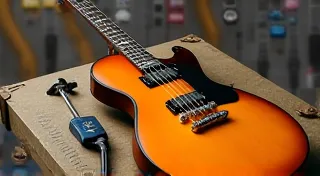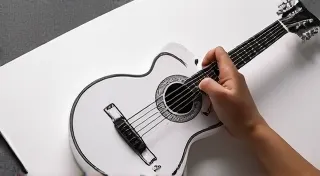Basic Guitar Wiring: Humbucker vs. Single Coil
Welcome to the exciting world of guitar wiring! For beginner guitar builders, the seemingly complex wiring inside an electric guitar can feel daunting. This article breaks down the fundamentals, focusing on the key differences between humbucker and single-coil pickups – the heart of your guitar's tone.
Understanding Pickups: The Basics
Before we dive into wiring diagrams, let's understand what pickups do. They convert the vibration of your strings into an electrical signal, which is then sent to your amplifier. Different pickup designs produce vastly different sounds. Building a guitar from scratch involves numerous decisions, and understanding how pickups contribute to the final sound is paramount. If you're just starting your guitar building journey, tackling a Telecaster style build is a fantastic way to gain experience – check out Your First Guitar Build: A Telecaster Style for a comprehensive guide.
Single-Coil Pickups: Bright and Classic
Single-coil pickups are the classic sound of many iconic guitars, think Fender Stratocasters and Telecasters. They consist of a single coil of wire wrapped around magnets. This simple design contributes to their bright, clear tone with plenty of articulation. However, they are also susceptible to hum – an unwanted noise caused by electromagnetic interference.
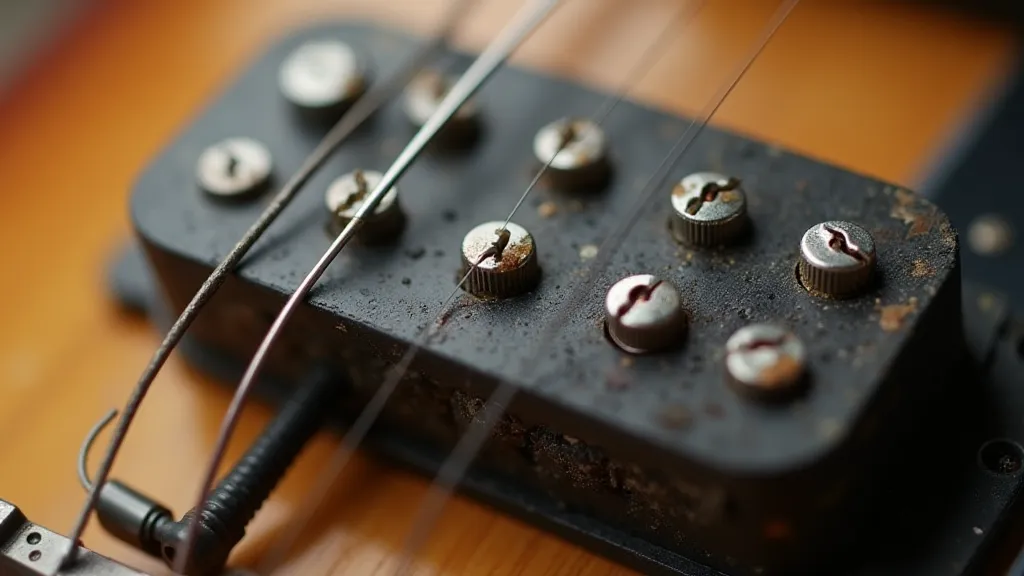
Pros of Single-Coil Pickups:
- Bright, clear tone
- Excellent for clean sounds and blues
- Responsive to picking dynamics
Cons of Single-Coil Pickups:
- Prone to hum (60Hz noise)
- Can be noisy in certain environments
Humbucker Pickups: Thick and Powerful
Humbucker pickups, as the name suggests, were invented to "buck" or cancel out the hum associated with single-coil pickups. They achieve this by using two coils wired out of phase with each other. This cancels the hum while retaining a powerful, thicker tone.
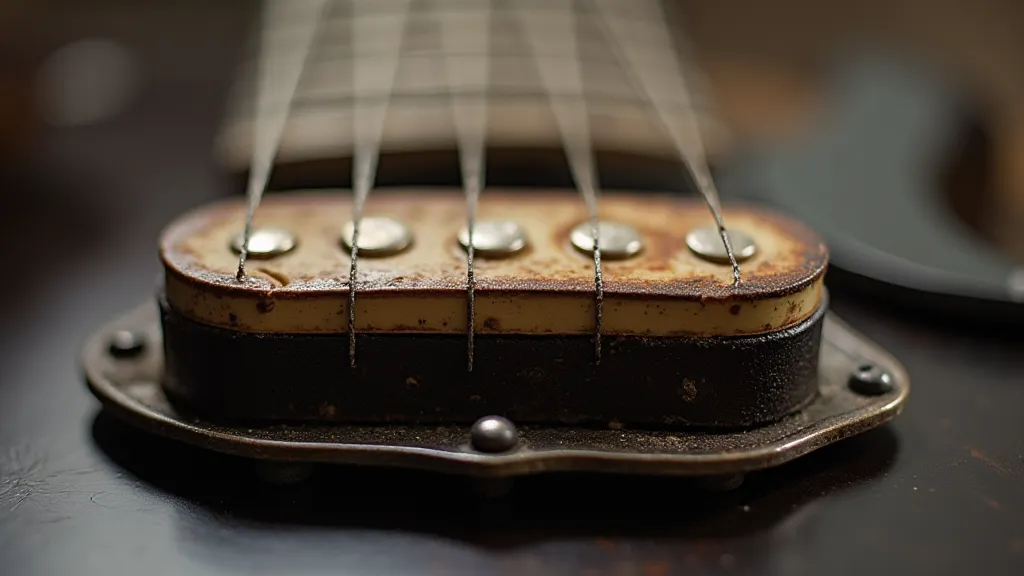
Pros of Humbucker Pickups:
- Reduced hum compared to single-coils
- Thicker, warmer tone
- Higher output – good for driving amplifiers
Cons of Humbucker Pickups:
- Can be less dynamic than single-coils
- Often a darker, less articulate tone
Delving Deeper: Wood Selection and Tone
It’s crucial to understand that pickup choice isn't the *only* factor influencing a guitar’s tone. The type of wood used for the body and neck also plays a significant role. Each wood resonates differently, contributing to the guitar's overall character. For those deeply interested in the subtle nuances of wood and their impact on sound, exploring The Wood's Memory: Echoes of the Forest in a Hand-Built Instrument provides a fascinating look at the artistry and science behind wood selection.
Wiring Diagrams: A Beginner's Guide
Wiring a guitar, whether single-coil or humbucker, follows basic electrical principles. While there are many variations, here are simplified diagrams to get you started. Always disconnect your guitar from power before attempting any wiring! The choice between single-coil and humbucker pickups often impacts the overall hardware requirements and design. Budget-friendly guitar hardware doesn’t necessarily mean sacrificing quality; there are plenty of options to get started without breaking the bank – see Budget-Friendly Guitar Hardware: Where to Save Money for some insightful tips.
Simple Single-Coil Wiring:
(Diagram of a basic single-coil wiring scheme showing pickup, volume pot, tone pot, and output jack.)
Simple Humbucker Wiring:
(Diagram of a basic humbucker wiring scheme showing two pickups, volume pot, tone pot, and output jack – clearly showing the humbucker coil connection.)
Note: These are simplified diagrams. Many guitars have more complex wiring, including coil splitting, phase switching, and push/pull pots. Research your specific pickup and guitar configuration for accurate wiring.
Understanding the Mathematical Harmony of Music
Beyond the practical aspects of wiring and hardware, the beauty of music extends to mathematical principles. The relationship between string length, fret spacing, and harmonic resonance can be explored through fascinating concepts like the Fibonacci sequence. Those interested in the intersection of music and mathematics might find The Fibonacci Sequence in Fretboard Geometry: A Harmonic Resonance to be a truly enlightening read.
Troubleshooting Common Wiring Issues
Even with careful wiring, things can go wrong. Here are some common problems and how to address them:
- No Sound: Check all connections. Make sure the pickup selector switch is functioning correctly. Test the pickup directly with a wire.
- Hum: Ensure proper grounding. Check for loose connections. Try a different outlet.
- Weak Signal: Make sure all components are good quality and functioning correctly.
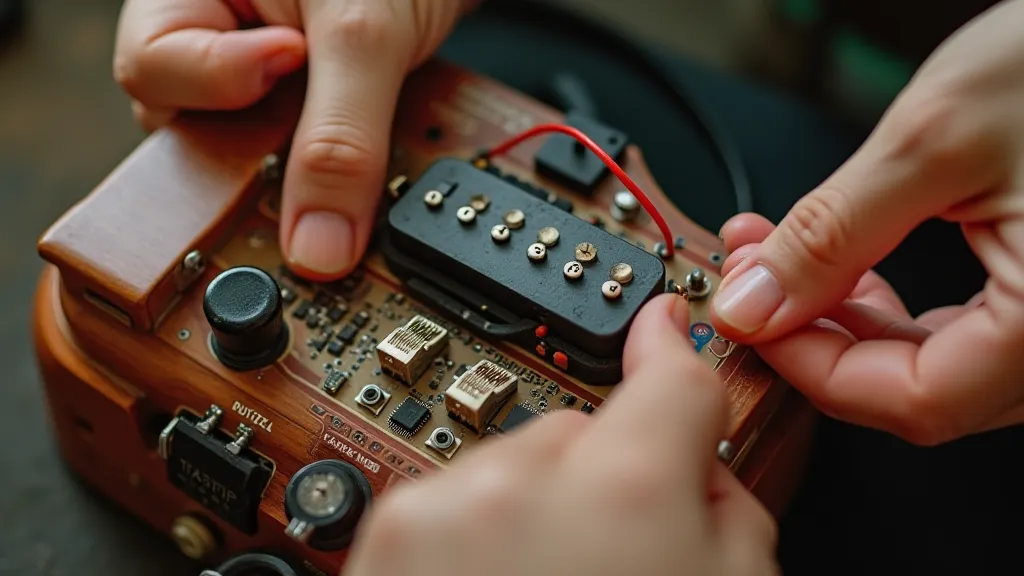
Advanced Wiring Techniques: Beyond the Basics
Once you're comfortable with the fundamental wiring configurations, the possibilities for customization become limitless. Techniques like coil splitting allow humbuckers to emulate the sound of single-coil pickups, offering even greater tonal versatility. Phase switching can create unique and often unexpected sounds. Push/pull pots and mini-switches open doors to complex wiring schemes that can dramatically alter a guitar's character.
Grounding: The Silent Guardian of Tone
Proper grounding is absolutely critical to minimize noise and hum. A poor ground can introduce unwanted interference, making your guitar sound muddy and indistinct. Ensure all components are securely connected to a common ground point, and use high-quality shielding to protect the electronics from external noise.
Shielding: Protecting Your Signal
Shielding your guitar's control cavity with copper foil or conductive paint can significantly reduce noise and interference. This creates a Faraday cage, preventing external electromagnetic fields from affecting the guitar's electronics.
Conclusion
Guitar wiring can be a rewarding aspect of guitar building. Understanding the differences between humbucker and single-coil pickups, and grasping the basics of wiring diagrams, is essential for crafting your own unique instrument. Don's be afraid to experiment, but always prioritize safety and double-check your work! The journey of guitar building is a continuous process of learning and discovery, and every successful wiring project brings you closer to creating the instrument of your dreams.



